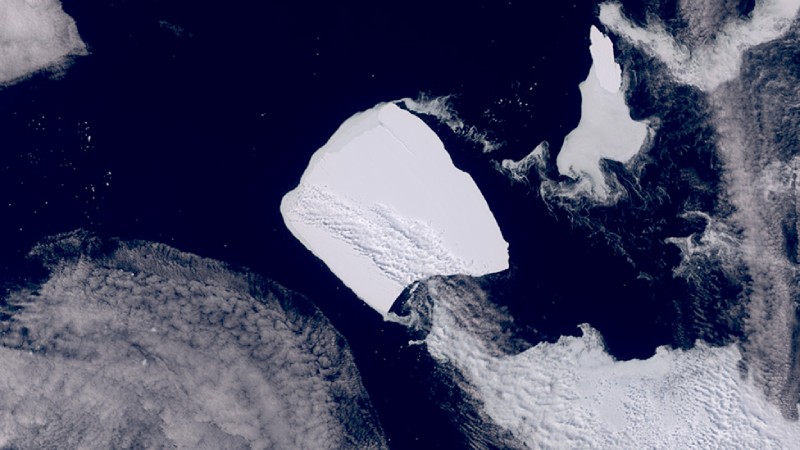
The world’s biggest iceberg known as A23a, which formed in 1986 on the Filchner-Ronne Ice Shelf in West Antarctica, has recently undergone an extraordinary journey, ending its decades-long period of relative stillness.
A23a, the largest iceberg in the world, has left its permanent home of over thirty years to go on an uncommon journey. This enormous iceberg, which is about a trillion metric tonnes in weight and covers 4,000 square kilometers, formed in 1986 on the Filchner-Ronne Ice Shelf in West Antarctica.
The largest iceberg in the world, larger than twice the size of the capital of Britain, is moving after spending decades anchored to the Antarctic seafloor.
In 1986, the massive chunk of ice detached itself from the Filchner-Ronne ice shelf, calved, and nearly instantly settled on the Weddell Sea floor in the Antarctic.
The iceberg, known as A23a, is nearly 4,000 square kilometers (1,544 square miles) in area and approximately 400 meters (1,312 feet) thick. In contrast, Greater London encompasses 1,572 square kilometers or 607 square miles.
But now, almost 3 decades later, scientists Ella Gilbert and Oliver Marsh of the British Antarctic Survey said the iceberg has most likely gotten smaller enough to lose its hold on the seafloor as part of the ice shelf’s normal growth cycle and has begun to move.
Since the 1980s, A23a has held the title of “largest current iceberg” multiple times; however, they noted that icebergs that are larger but have a shorter lifespan, such as A68 in 2017 and A76 in 2021, have occasionally surpassed it.
The iceberg is currently moving five kilometers (three miles) per day and is expected to head eastward due to ocean currents.
Although this specific iceberg most likely broke off as a result of the ice shelf’s normal growth cycle, Gilbert and Marsh noted that Antarctica is losing a significant amount of ice annually due to climate change.
Todd Barrow is rapidly carving out his place in the country music spotlight. Born and… Read More
Bangalore, often dubbed the Silicon Valley of India, is a city that seamlessly blends technological… Read More
Instagram's latest update includes a new feature called "Blend." With the use of this feature,… Read More
Dr. Rema Vassar is a leading advocate for equity in education, particularly in ensuring that… Read More
Exploring the world of guitar music is a journey into the heart of creativity, where… Read More
Marine construction is a vital field that shapes coastal infrastructure, energy production, and global connectivity.… Read More